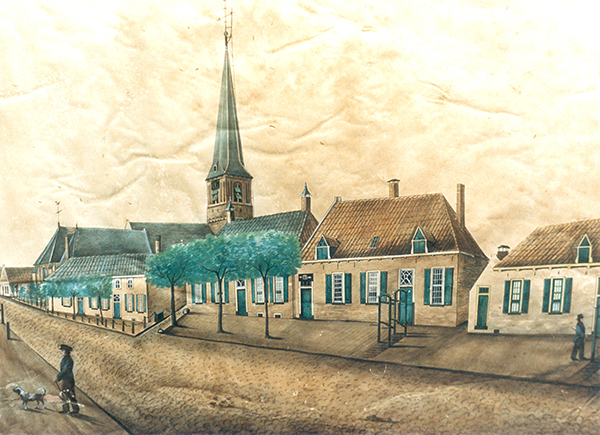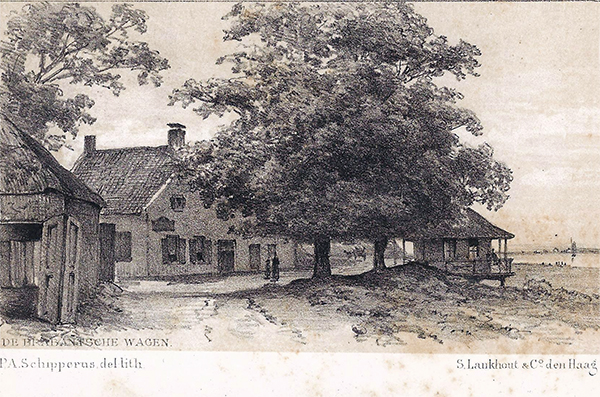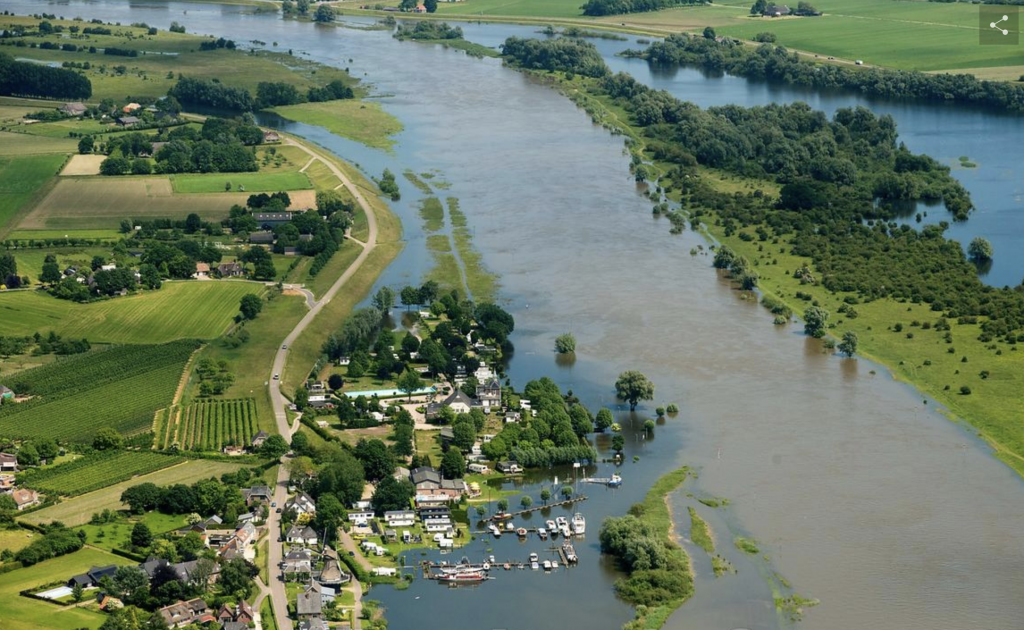
THE BIKE TRIPS
This is a bicycle route to see memorial points of the stay of the Bashkiers, starting in Wijhe.
Start: Wijhes Museum, Kerkstraat 34. Here is a presentation of the Cossack story, with an image of the ship bridge and the painted portrait of Burgemeester Gilles Schouten.
1. Then to Schoutenstraat, named after the aforementioned, first mayor of Wijhe.
2. Near the Schoutenstraat there is a small staircase going up to the service road next to the Rijksstraatweg that runs along Wijhe from Deventer to Zwolle, to the right, to the north. Good view over the IJssel. You can see where the ferry is located; the river is wide and not suitable for the crossing of the troops.
3. The cyclist passes by De Brabantsche Wagen. Here was the inn of the same name, managed by Miss Cat Shop and popular with the Cossacks. Ms. K. knew how to handle rude Cossacks.
4. At the place where the inn has stood, turn right down the dike, first left onto the Wijhendaalseweg. After 200 meters on the right-hand side, Het Wijendaal house, number 6, is the home of Schouten. The road ends in a dead end, so back to the Oranjelaan and left to the Stationsweg.
5. The Benckendorff monument (Het Weijtendaal site) and the bivouac (camp) of the Cossacks (Willem Alexanderhof, behind the French School) are in close proximity to each other. The campground cannot be specified exactly, but is bordered on the north by the Stationsweg, on the west by the Oranjelaan, on the south by the Julianalaan and on the east by a part of the Willem de Zwijgerlaan.
6. On the western edge of the campground, somewhere behind the former Rabobank, could be the place where one or two fallen Bashkir soldiers are buried. This is an assumption that is only supported by the report that a grave has been discovered in the garden of a notary. That notary has lived on the site of the former bank building. This is still being investigated. The WA Hof is “through” through a narrow pedestrian path, spacious enough for a person with a bicycle. This path therefore leads past or over the supposed burial location.
7.At the end of this path, turn right towards Langstraat, the center of Wijhe, which was exactly the same in 1813. Halfway, just before the church on the right (now Hema) there were two forges. The blacksmiths have undoubtedly offered their services to the Cossacks. There is a painted portrait of the Langstraat from the mid-19th century, made by Peter Visser. 8. Then to the right the old town hall from 1913, currently used as a library (back) and partly therapeutic center (front).
9. You will find Primera Schippers a little further on the right. The mairie (city hall) was established in this building in 1813, as a town hall was then called. Maire Gilles Schouten initially lived in it, but later left for the aforementioned Het Wijhendaal on the Wijhendaalseweg.
10. Along the Wijhese Molen from 1703. This already existed in the French period. Continue straight, cross Raalterweg, via the Enkweg you leave the center of Wijhe.
11. At the end of the Enkweg with the railway viaduct, take the Scherpenzeelseweg. The De Rankenberg farm is already old and was already here in the Cossack period.
12. At the bend to the left, cross the national road, onto the river dike, follow the forest path, at the end turn right towards Fortmond, get off at junction 38 and enter the site of the old brick factory towards the Kozak ferry.
13. Take the ferry to Veessen, to visit the Cossack monument.
The sailing season of the Cossack ferry is from 30 March up to and including 1 October 2019.




Alternatieve fietsroute
An alternative cycle route can be found at: https://www.fietsnetwerk.nl/fietsroutes/afwisselende-fietsroute-rond-heerde/
During this bike ride you will come to the village of Wapenveld, among others. Wapenveld has the floodplains of the IJssel on one side and the heathland of the Veluwe on the other. The lovely village has often been the scene of battles. In the 80-year war it was looted by nobles and geuzen, during the French occupation by the French until the Cossacks came to liberate them. A memorial tree was planted under which, according to legend, Napoleon’s horse is buried.